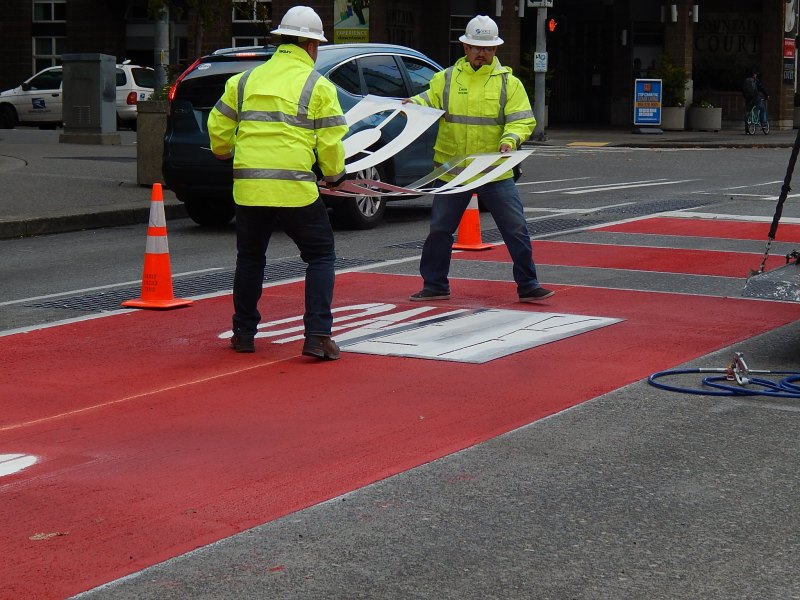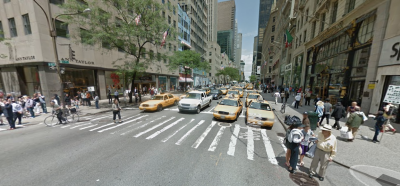A Fairer, Safer City? Here’s the Agenda from Top Transportation Advocacy Groups


A truly equitable city is built on equal distribution of safe streets, reduced car emissions, cheaper and better transit, cutting back on free parking and, of course, a bigger and better connected network of protected bike lanes, according to a coalition of transportation groups that is calling for all citywide candidates to embrace its “equity agenda.”
The blueprint for a better city — officially dubbed “A Transportation-Led Recovery Agenda” — will be released at 11 a.m. on Tuesday by Riders Alliance, New York Lawyers for the Public Interest, New York League of Conservation Voters, Regional Plan Association, NYPIRG Straphangers Campaign, StreetsPAC, Transportation Alternatives, and Tri-State Transportation Campaign.
The groups argue that transit and safe streets are the foundation for climbing out of the coronavirus pandemic because street safety and transit improvements “can boost mobility, access, safety, and resiliency.”
“The hurdles are real,” the groups said in a statement. “Cars release the overwhelming share of our stubbornly high transportation carbon emissions. COVID cases were worsened by air pollution. Drivers and motorcyclists have recklessly used empty streets to set modern crash fatality records. Still, subway ridership more than tripled since April. … Big opportunities stand within reach.”
The agenda includes demands that are familiar to any street safety advocate, but focus on ensuring that the city avoids keeping redesigns from only benefitting more well-off New Yorkers. Equitably distributing programs such as Open Streets became a hot-button issue when observers found that communities of color in Brooklyn did not benefit as much as White neighborhoods.
The coalition demands that candidates commit to:
- funding public transportation, putting public money into Citi Bike and expanding reduced-fare transit options
- improving city buses with more bus rapid transit or busways along major thoroughfares outside of Manhattan
- get congestion pricing done already
- tackling automobile emissions, in part by expanding the electric cargo bike delivery program to smaller companies around the city
- building out many more accessible streets and sidewalks
- building a real protected bike lane network
- clawing back streets and sidewalks from parked cars (and adding more meters), and eliminating parking minimums for new construction
- putting the DOT in charge of traffic enforcement.
The coalition also demands that accessible taxis be brought into the Access-A-Ride system so participants can get more on-demand rides as opposed to having to book them in advance.
The group also wants candidates to commit to actually accomplishing the goals of the Streets Master Plan, which became law last year, but would not go be implemented until the next mayor’s term. would mean 30 miles of bus lanes and 50 miles of protected bike lanes per year, with a priority on adding the bike lanes to areas with high crash rates and bad connections to the larger bike network.
Some of the action items the coalition are asking for are programs that the de Blasio administration announced but struggled to expand, like an increase in residential loading zones, and other are larger ideas like using low-traffic neighborhoods and zero emissions delivery options in business districts to cut down on the millions of metric tons of emissions that vehicles produce in the city.
And look out, NYPD: after years of inaction from City Hall on the abuse of parking placards, the coalition is demanding a total end to any non-medical parking privileges, and for parking enforcement to focus on people who park on the sidewalk and in bus lanes.
“An equitable recovery starts on the ground we walk on,” said Riders Alliance Policy & Communications Director Danny Pearlstein. “COVID put the inequity that has long been built into our streets into sharp relief. Choking gridlock gave way to fast and reliable bus service during lockdown. New bus and bike lanes, Open Streets and Open Restaurants have all helped reclaim public space from private cars. The toolkit is broad. The next Mayor and Council now need the political will to design a fairer, safer city for all New Yorkers.”
